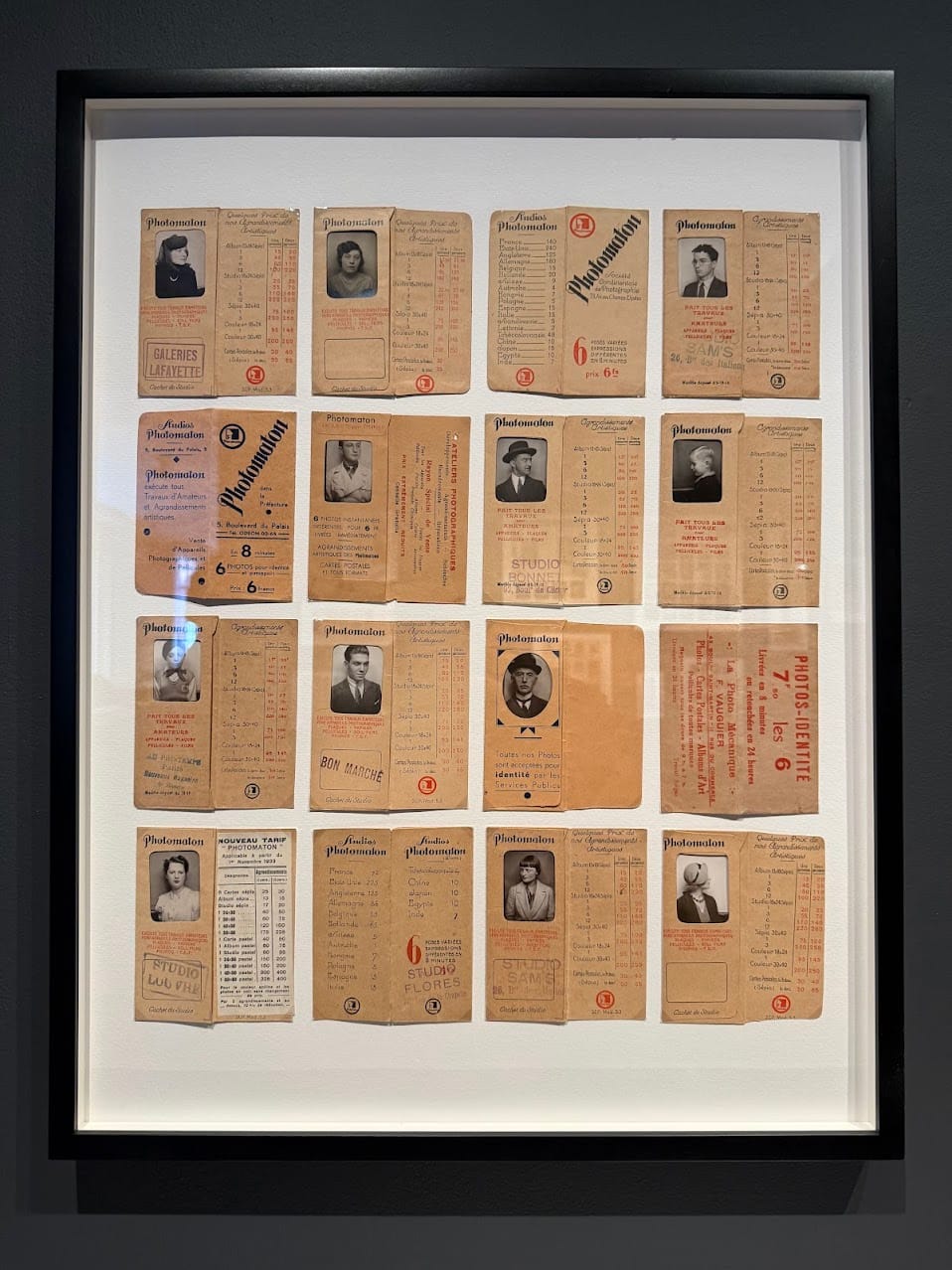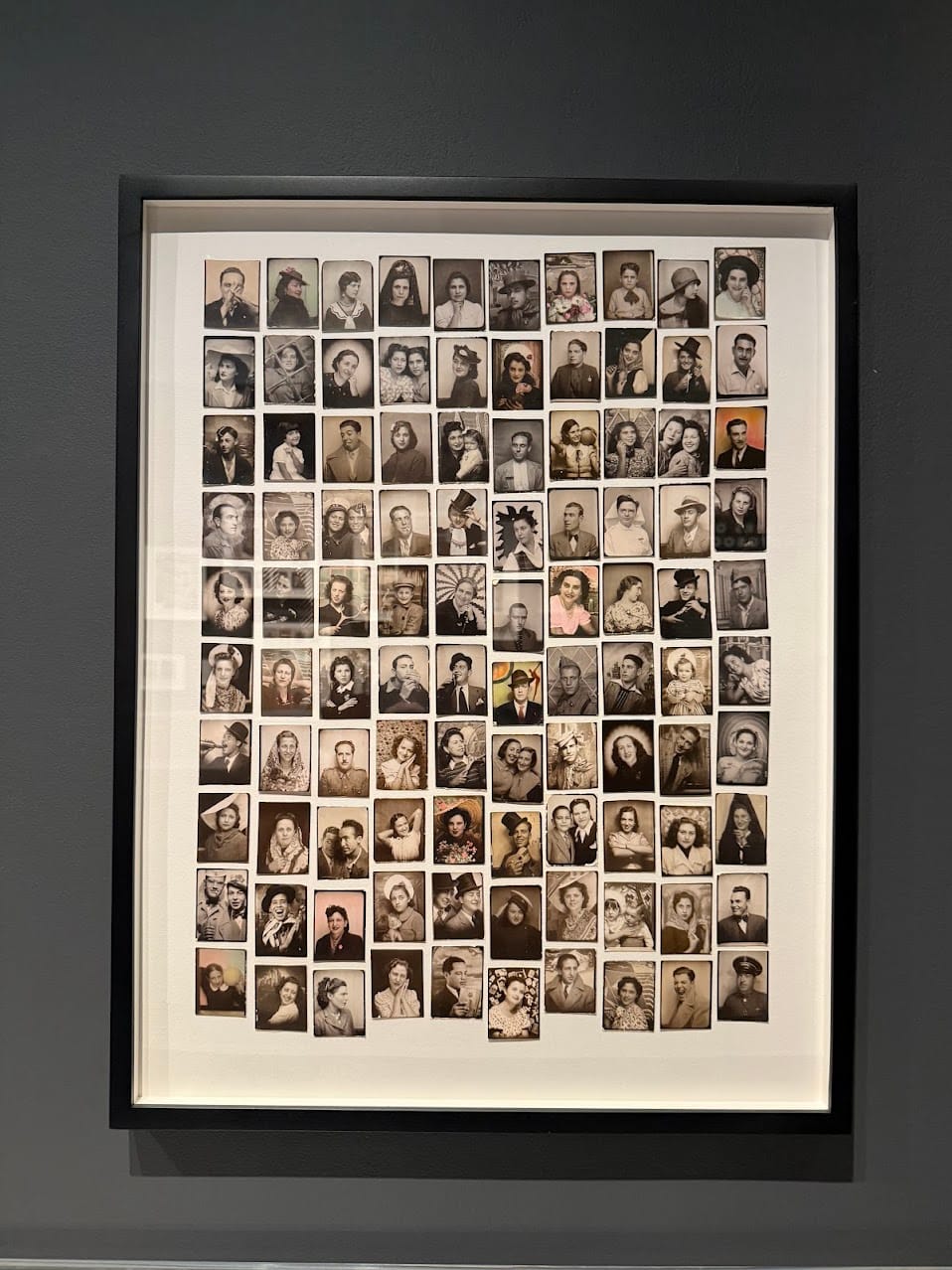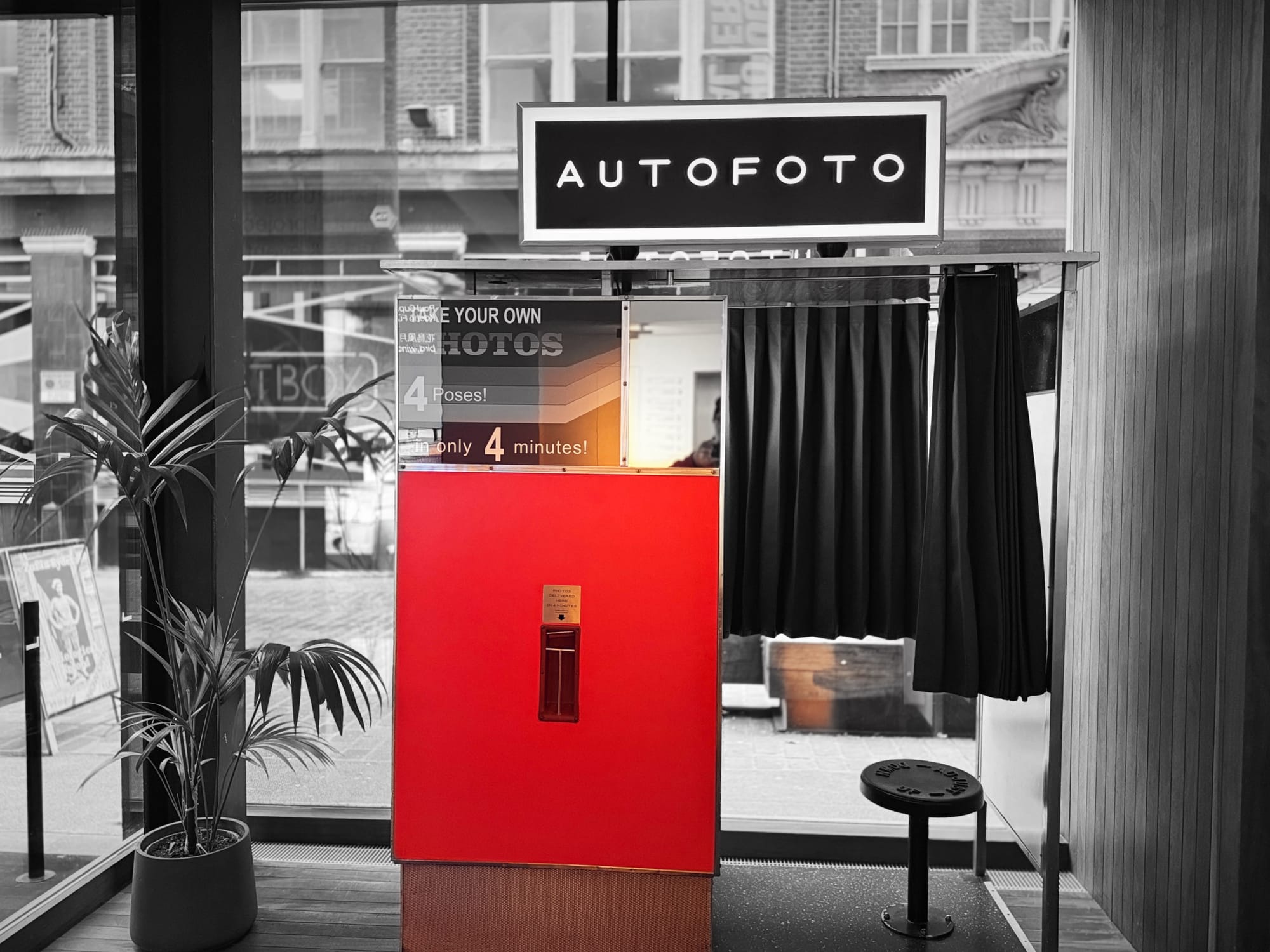From post-war identity portraits to the playful strips of friends crammed behind a curtain, the photobooth is both democratic and deeply personal, a studio for everyone.
Standing before the gallery’s red Autofoto booth, I couldn’t resist taking a photograph of it. Its scarlet face glows against the gallery’s calm greys, like a small theatre waiting for its next actor. Inside, there’s no photographer, no direction, just the brief intimacy of a curtain drawn and four flashes of light.
In an age of endless selfies and instant filters, the booth still asks something different of us: to pause. To sit still, to see ourselves unedited, and to wait as chemistry or pixels render our reflection. Those few minutes of privacy have meant so much over the decade, a love token, a memento, an identity photo, a subversive act.
Photobooths have documented generations, lovers, rebels, soldiers, artists, and today’s artists continue to reclaim them as spaces of self-definition. From Andy Warhol’s strip portraits to contemporary installations, they’ve become mirrors of social change as much as faces.


Images from the Exibition
For me, standing there in Soho, it was a reminder of how photography has always balanced control and chance. The booth doesn’t flatter or judge, it just records, faithfully, whoever dares to step inside.
Sometimes, the simplest machine can reveal the most about us.






